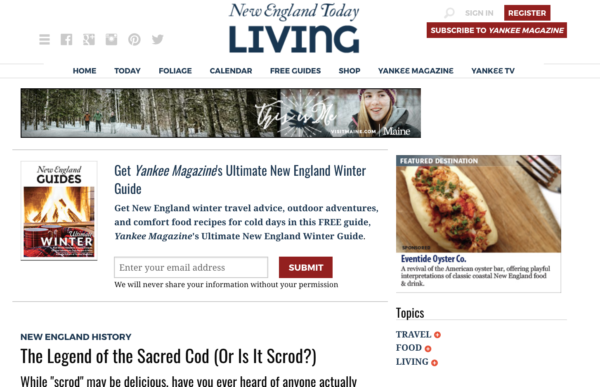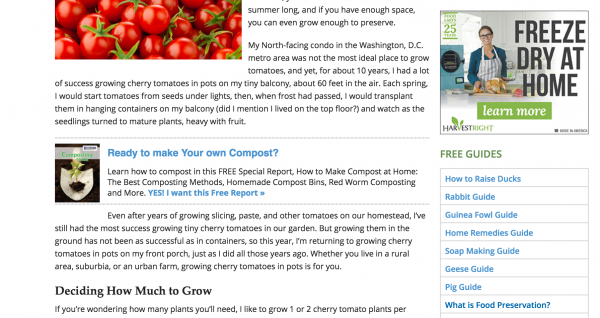
 Your email capture rate (ECR) is calculated by dividing the number of new email subscribers your website captures each month, by the number of unique new visitors passing through your website in the same 30-day period. Your goal is to capture email contact permission from your website visitors by making generous offers that include free incentives.
Your email capture rate (ECR) is calculated by dividing the number of new email subscribers your website captures each month, by the number of unique new visitors passing through your website in the same 30-day period. Your goal is to capture email contact permission from your website visitors by making generous offers that include free incentives.
If, during a given month, you have 100,000 unique visitors arrive at your website (according to Google Analytics or a comparable measurement tool) and 2,000 of these unique visitors become new email subscribers (according to your email management program or service), your ECR is 2% (2,000/100,000 = .02 or 2.0%).
Our analytics group is currently monitoring more than a dozen websites published by our members. Our individual member websites are capturing anywhere between one and 2% of their monthly new unique website visitors and converting them from visitors into email subscribers.
Perhaps this business goal, more than any other, separates website publishing from subscription website publishing. The act of capturing email permission separates the casual visitor from the passionate enthusiast and gives your team the opportunity to push email newsletters to your subscribers, which can generate revenue using several different multiplatform revenue generation systems over years and years.
[text_ad]
Subscription website publishing is about the power of building continuity revenue that accumulates over time. This simple fact is true if your business is sponsor-driven, user-driven, or combines both sponsor and user revenue to maximize subscriber value.
So, what’s your site’s ECR? If it isn’t 1% or more, you’ve got some work to do! Any website analytics tool can measure your unique monthly visitors, but projecting optimal email circulation requires a calculation.
- What is an acceptable email capture rate (ECR) for your business goals?
- If you assume the ECR will be constant at that given percentage over 60 months, where will your email circulation level off?
The answer is a linear equation. The relationship between the ECR and email file size produces a straight-line graph when you hold all other variables constant. If you can double your ECR, you’ll double the size of your subscriber file over five years (or any fixed period).
How to increase your email capture rate
 Irresistible offers make it hard for visitors not to sign up. It all starts with your content. After reaching a point of satisfaction with your content, make an offer that’s worth the exchange of an email address. At the most basic level, we recommend giving away a free special report in exchange for your user’s email address.
Irresistible offers make it hard for visitors not to sign up. It all starts with your content. After reaching a point of satisfaction with your content, make an offer that’s worth the exchange of an email address. At the most basic level, we recommend giving away a free special report in exchange for your user’s email address.
Using the 3C zone architecture, you will get the highest sitewide capture rate. These conversion architecture page elements come in the form of floater order forms, order forms in editorial and navigation (OFIEs and OFINs), display ads, text ads, and simple text links.
Most publishers we’ve studied are only implementing one basic email capture element. Thus, they’re only seeing a 0.1 to 0.2% capture rate. The following publisher examples are all Mequoda partners and have significant capture rates using these methods:
Floaters: Named a floater because it appears to float onto a webpage, they were created to fight back against pop-up blockers. While it may look like a pop-up, a floater does not open in a separate window and therefore cannot currently be blocked or banned.
OFIE (Order form in editorial): An OFIE is an embedded email subscription form that appears above an article, which offers a free report in exchange for an email address. Learn more about using OFIEs to gather new email subscribers.
OFIN (Order form in navigation): These online order forms that can improve your email capture rate appear in the right- or left-hand navigation panels of a website. The user fills them out to download a freebie and sign up for an email newsletter.

Text Ad: An online advertisement block that uses text links, or text-based hyperlinks, sometimes with graphics, sometimes without. These are found within editorial content to sell a product or obtain an email address.
Text Links: Hypertext links in editorial or navigation that lead to a Rapid Conversion Landing Page can also improve your email capture rate. These are the best form of persistent conversion architecture because they’re subtle, yet very effective ways to drive traffic to a Rapid Conversion Landing Page with the ultimate goal of increasing email database circulation.
 The ultimate goal for the website publisher is to quickly and easily add unknown site visitors to an email database. Using floaters, OFIEs, OFINs, text ads, and simple text links on a website are relatively simple ways to improve the conversion architecture across your website network.
The ultimate goal for the website publisher is to quickly and easily add unknown site visitors to an email database. Using floaters, OFIEs, OFINs, text ads, and simple text links on a website are relatively simple ways to improve the conversion architecture across your website network.
We have many more ways to convert visitors into email subscribers, too. Once you capture these email subscribers, learn more about converting them into paid members and subscribers in our FREE report, 7 Ways to Monetize your Portal Audience.
What’s your email capture rate? Leave a comment below to compare.
This post was originally published in 2012 and is updated frequently.






Woot Woot, Mine is at 21%
Nice job Amber! Anything major about the overhaul that you think contributed to the giant leap?
We have a side project dealing in the education sector. Giving away freebies we have seen conversion rates as high at 37% on targeted traffic. The campaigns are very niche so volume is low – This high percentage conversion makes up for it.
I will note that we were averaging a 12% conversion before a landing page overhaul. I though we would get an extra 5% conversion – not more than double. Needless to say, I’m very happy with our team 🙂
Email Capture Rate is an alternate label for Email Conversion Rate and also gets abbreviated as ECR.. a rose by any other name?